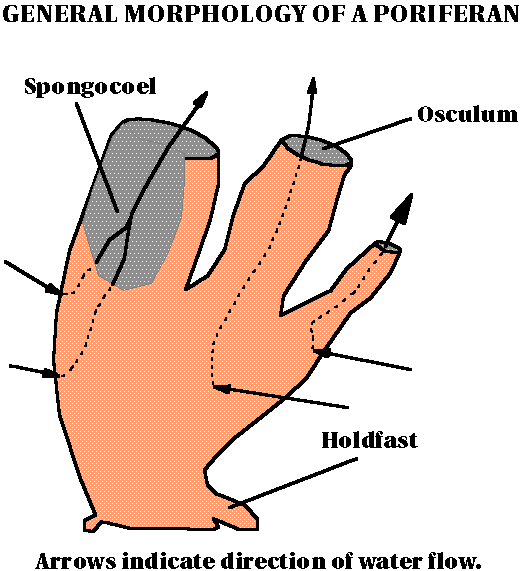



Porifera: More on Morphology






Sponge bodies are diverse in form, ranging from encrusting sheets, to volcano-shaped mounds, to tubes as small as one millimeter or as large as one meter, and to upright sheets reminiscent of elephant ears. In all cases, poriferans have a canal system, through which they pump water. Water enters through pores called ostia, flows through canals to a spacious chamber called a spongocoel, and finally exits through large openings called oscula.Often, sponges are distinguished by the level of complexity exhibited by their bodies. The simplest form consists of a single tube two cell layers thick. Poriferans with this type of architecture are necessarily very small due to surface area to volume constraints. In order for a sponge to attain greater size, the sponge wall must be folded in on itself. A simple folding of the wall yields a sponge body with sycon organization. The vast majority of sponges are organized in a more complex way, the leucon condition, with folds upon folds, resulting in a series of flagellated chambers connected by canals. Ascon, sycon, and leucon are levels of complexity that grade one into the other.


